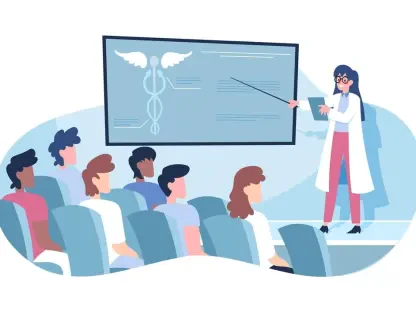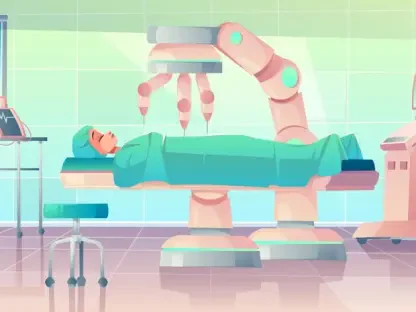As 2025 unfolds, the healthcare industry faces a critical juncture characterized by rapid transformations shaped by technological advancements, workforce challenges, and financial pressures. This roundup explores varied opinions and insights within the industry regarding these changes. The goal is to provide a comprehensive examination of leadership responses to the dynamic scenarios in healthcare, shedding light on expert perspectives that inform effective strategies for future adaptability.
Harnessing Technological Innovations in Healthcare Leadership
Leadership in Tech Integration: Healthcare leaders today are emphasizing technological innovation as a cornerstone for advancement. Industry leaders recognize the transformative potential in AI-driven analytics and telehealth solutions that streamline patient care and administrative processes.
Expert Insights on Seamless Integration: Some experts suggest that a carefully curated approach to technology integration can enhance operational efficiency and patient outcomes. They stress the importance of training staff and adapting organizational structures to support tech-driven changes.
Balancing Innovation with Tradition: The tension between adopting cutting-edge technology and preserving established practices is often a focal point in leadership decisions. Leaders are tasked with evaluating benefits and risks carefully, ensuring that innovation complements traditional values to maintain patient trust and care quality.
Strategic Realignment and Market Dynamics
Adapting to Market Changes: Within the healthcare sector, strategic realignment is occurring as leaders respond to shifting market demands. Some observers note that aligning organizational strategies with evolving patient needs and economic constraints is central to achieving sustainability.
Leadership in Organizational Restructures: Real-world restructures illustrate how leadership adaptability influences organizational resilience. Leaders are exploring diverse structural modifications to better position their organizations amid external pressures while prioritizing operational continuity.
Opportunities and Risks: In navigating modern healthcare trends, leadership discovers opportunities to innovate but also faces risks such as regulatory challenges and fluctuating economic environments. Experts propose that proactive engagement and robust risk management strategies are imperative.
Emerging Leadership Approaches
Exploring New Trends: The emergence of novel healthcare trends prompts new leadership approaches. While some leaders are embracing global variations in responses, others focus on personalized strategies reflecting local healthcare needs.
Global Leadership Variations: Variations in global healthcare leadership responses highlight differing priorities and risks. While some emphasize digital health initiatives, others focus on community-centric models to address unique demographic challenges.
Re-Evaluating Leadership Priorities: Reevaluating assumptions around leadership prioritization calls for a fresh perspective. Experts argue for a shift from purely hierarchical models to more collaborative frameworks that empower diverse voices within healthcare systems.
Holistic Leadership Beyond Tradition
Comparing Leadership Styles: A comprehensive assessment compares traditional leadership models with emerging holistic approaches. These comparisons aim to identify effective practices for navigating complex healthcare ecosystems.
Effective Styles and Future Speculation: By analyzing varied styles, insights into effectiveness and adaptability emerge, contributing to forward-looking speculation about leadership evolution. The expectation is that adaptable, inclusive leadership will drive progress.
Transitioning Leadership: Insights from the Frontlines
Lessons in Leadership Adaptation: Transitioning leadership requires understanding frontline experiences that inform adaptation strategies. These learnings highlight the evolving nature of healthcare demands and leadership responses.
Practical Strategies for Growth: Experts emphasize developing strategic plans for leadership growth, focusing on skills and agility requisite for current challenges. Initiatives targeting leadership development are increasingly prioritized to foster ongoing innovation.
Synthesizing Insights and Anticipating Future Leadership Needs
Connecting Core Insights: Insights from the article present a coherent picture of healthcare leadership’s current state, emphasizing the importance of adapting to dynamic changes in technology and market shifts.
Constant Leadership Evolution: The need for continuous evolution in leadership is underscored, reflecting the industry’s rapid transformation. Leaders are encouraged to embrace change actively and anticipate emerging needs proactively.
Future Considerations and Actions: The article presents actionable steps, urging healthcare leaders to prioritize adaptability and innovation. Future-oriented strategies focused on robust risk management and collaborative leadership are crucial for thriving in an ever-evolving landscape.









